Plenary Speakers
Professor and Chair, Department of Biomedical Engineering
Columbia University
President of IEEE EMBS
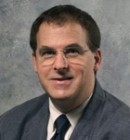
Prof. Andrew Laine is a leader in medical imaging, image analysis and signal processing, computational biology, and biometrics research. He was the first to apply multi-resolution representations for feature analysis of digital mammography and cardiac ultrasound. He pioneered work on medical imaging that he first introduced in 1992 using nonlinear processing techniques of wavelet representations for contrast enhancement. He currently analyzes real-time video 3-D ultrasounds of the heart in an effort to better understand and treat heart disease. He is developing software that will measure the strain on the muscles of the heart in real-time 3-D and localize infarcted or ischemic tissue that could be salvaged by intervention, thus recognizing at an early stage what tissue is damaged or at risk. Director of the Heffner Biomedical Imaging Laboratory at Columbia Engineering, Laine holds two patents related to 3-D processing of ultrasound, has authored more than 300 peer-reviewed papers, and has graduated more than 25 doctoral students in the field of medical image analysis. He has been a member of IEEE member for 30 years, and was elevated to Fellow IEEE in 2010. Professor Laine served as Vice President of IEEE EMB Society Publications (2007-12), and served as member of the IEEE EMB Society Ad Com (2006). He has been a member of IEEE member for 30 years, and was elevated to Fellow IEEE in 2010.
University of California, Irvine
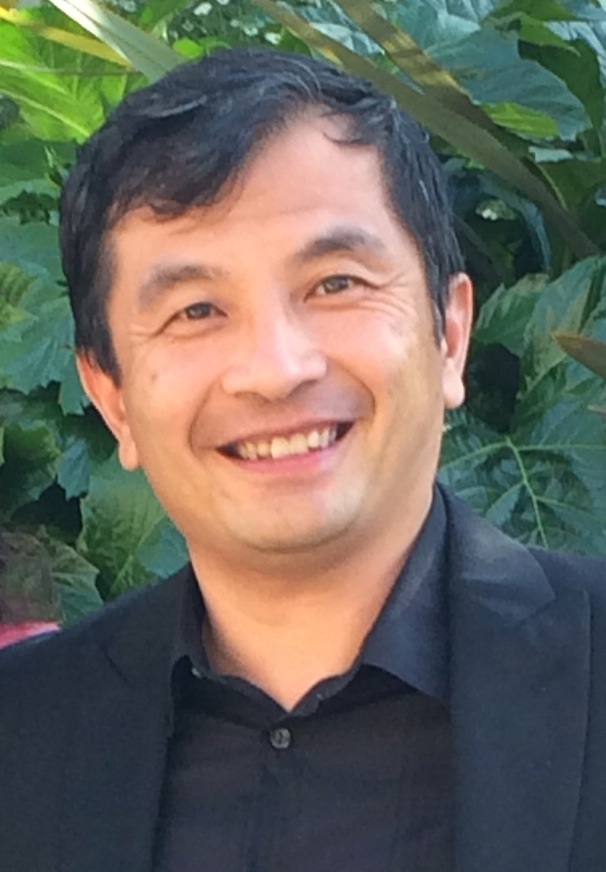
Dr. Nie’s research area is mathematical and computational biology. His early work was on computer simulations and analysis of mechanics in bubbles, drops, binary alloys, and turbulence. Since 2001, Dr. Nie uses modeling and data-driven approach to investigate embryonic development, stem cells, and gene regulatory networks. Through close collaboration with biologists, Dr. Nie and his research team have discovered critical roles of feedbacks in tissue regeneration driven by stem cells, uncovered novel functions of noise that can benefit cells in making the correct decisions, identified key mechanisms responsible for the robust morphogenesis during development, and developed powerful multi-scale and stochastic models and computational tools that have many applications.
Dr. Nie has been instrumental in developing the area of systems biology at UCI. He is the associate director of a National Center of Excellence on Systems Biology funded by NIH since 2007, the director of an innovative gateway PhD program on Mathematical and Computational Biology that spans five different schools at UCI, and the director of the Center for Mathematical and Computational Biology in School of Physical Sciences.
Dr. Nie was a UCI Chancellor Fellow during 2005-2008. He is a Fellow of America Association for the Advancement of Science and a Fellow of American Physical Society.
Kavli Fellow
Georgia Research Alliance Distinguished Cancer Scholar
Georgia Tech
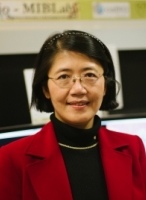
Prof. May Wang's primary research interest is in biomedical and health informatics for systems medicine, with the goal to accelerate and enable the discovery, development, and translation in modern biology, medicine, and healthcare. She has been publishing in journals such as Annals of Biomedical Eng, BMC Bioinformatics, Trends in Biotechnology, Nature Protocols, Proceedings of National Academy of Sciences, Annual Review of Medicine, The Pharmacogenomics Journal, Nature Biotechnology, and Genome Biology etc. Her team has developed multiple informatics software systems. Among these, caCORRECT and omniBiomarker have been certified by NCI caBIG as silver-level compatible. During 2005-2010, Dr. Wang has served as the director of Bioinformatics and Biocomputing Core in NCI sponsored Emory-Georgia Tech Center of Cancer Nanotechnology Excellence. In addition, she has played an active role in working groups of National Cancer Institute (NCI/NIH) cancer Biomedical Informatics Grid (caBIG) on nanoinformatics, and FDA-led Microarray Quality Control Consortium (MAQC) on investigating regulatory guideline for biomarker. Currently, she serves as co-chair of Information Technology for Health (ITH) Technical Committee (TC) in IEEE EMBS.
Dr. Wang received Distinguished Cancer Scholar Award from Georgia Cancer Coalition in 2004, an Outstanding Undergraduate Research Faculty Mentor Award from Georgia Tech in 2005, and an Outstanding Service Award from IEEE BIBE in 2007. Dr. Wang received Ph.D.EE, multidisciplinary MS degrees (EE, Applied Math, and CS) from Georgia Institute of Technology in USA, and BEng from Tsinghua University in China. In addition, Dr. Wang has several years of industrial R&D experience in the former AT&T Bell Labs, Intel Architecture Labs, Hughes Research Labs, Lucent Technologies Bell Labs, and Agere Systems.
Google Health
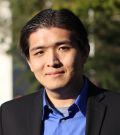
Dr. Ming Jack Po is a product manager at Google working on healthcare. Previously, he led BioDesign at Columbia University, where he also did his MD / PhD. He focuses on productivity, healthcare, math, and gadgets.- Jack started his entrepreneurial journey in the late 1990's as a high school student at Stuyvesant High School. He co-founded and led the technology team at a venture backed startup before being recruited to Wall Street by quantitative hedge fund D. E. Shaw & Co. Since that time, Jack has expanded his entrepreneurial activities outside of internet technology into medical devices. Jack is a 2011 Global Shapers at the World Economics Forum, a 2011 InSITE fellow, a 2011 Fellow in the Startup Leadership Program in New York, and currently serves on the board of several companies and non-profit organizations.
Jacobs School of Engineering
University of California, San Diego
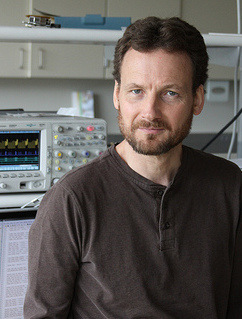
Prof. Cauwenberghs pioneered the design and implementation of highly energy efficient, massively parallel microchips that emulate function and structure of adaptive neural circuits in silicon. Embedded mechanisms of synaptic plasticity in these silicon microcircuits model the adaptive intelligence of biological nervous systems interacting with variable and unpredictable environments, and assist in optimizing the energy efficiency and noise robustness of nanoscale circuit components implementing the neural functions. Recently the Cauwenberghs group demonstrated synaptic arrays in silicon for adaptive template-based visual pattern recognition operating at less than a femtojoule of energy per synaptic operation, exceeding the nominal energy efficiency of synaptic transmission in the human brain.
A main focus of current work is on extending integrated sensing and actuation to dynamical interfaces to neural and brain activity. Recent developments include implantable and wireless microelectrode arrays for distributed recording of electrical and chemical neural activity, and biopotential sensor arrays and integrated signal processing for electroencephalogram and electrocorticogram functional brain imaging. These dynamical interfaces between living and artificial nervous systems offer tremendous opportunities for transformative, integrative neuroscience and neuroengineering that are the focus of continued research in the Cauwenberghs laboratory, in collaboration with partners in academia, industry, and the clinical sector.
Gert Cauwenberghs received the M.Eng. degree in applied physics from University of Brussels, Belgium, in 1988, and the M.S. and Ph.D. degrees in electrical engineering from California Institute of Technology, Pasadena, in 1989 and 1994.
He is Professor of Bioengineering at University of California San Diego, where he co-directs the Institute for Neural Computation. Previously, he held positions as Professor of Electrical and Computer Engineering at Johns Hopkins University, Baltimore Maryland, and as Visiting Professor of Brain and Cognitive Science at Massachusetts Institute of Technology, Cambridge.
He is a Francqui Fellow of the Belgian American Educational Foundation, and received the National Science Foundation Career Award in 1997, Office of Naval Research Young Investigator Award in 1999, and Presidential Early Career Award for Scientists and Engineers (PECASE) in 2000. He was Distinguished Lecturer of the IEEE Circuits and Systems Society in 2003-2004, and chaired its Analog Signal Processing Technical Committee in 2001-2002. He currently serves as Associate Editor for IEEE Transactions on Biomedical Circuits and Systems, and IEEE Transactions on Neural Systems and Rehabilitation Engineering. He is Senior Editor for the IEEE Sensors Journal.
Rice University
Adjunct Assistant Professor in Neuroscience
Baylor College of Medicine
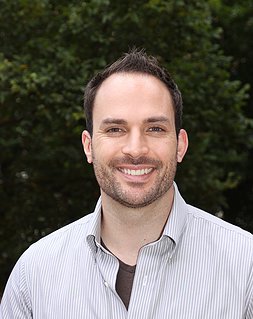
Prof. Jacob Robinson is an Assistant Professor in Electrical & Computer Engineering and Bioengineering at Rice University, and an Adjunct Assistant Professor in Neuroscience at Baylor College of Medicine. His research group uses nanofabrication technology to create devices that can manipulate and monitor neural circuit activity.
Dr. Robinson graduated from the University of California, Los Angeles with a B.S. in Physics in 2003. While at UCLA, he worked in the Electrical Engineering and Physics departments in the laboratories of Professors HongWen Jiang, David Saltzberg, and Yahya Rahmat-Samii.
In 2003 he entered the Applied Physics Ph.D. program at Cornell University where he worked with Professor Michal Lipson developing nanoscale silicon devices that confine light to small volumes and thereby enhance the interaction between light and matter. He also developed a novel scanning probe technique to image highly confined optical modes with nanometer spatial resolution.
Upon completing his Ph.D. in 2008, Dr. Robinson joined Professor Hongkun Park's research group in the Chemistry and Chemical Biology Department at Harvard University. As a postdoctoral researcher he helped develop arrays of vertical silicon nanowires that can penetrate the cellular membrane without affecting cell viability. His work at Harvard showed that vertical silicon nanowires can be used to deliver biomolecules into a cell and interrogate a cell's internal electrical activity. His current research interests include nanoelectronic, nanophotonic and nanomagnetic technologies to manipulate and measure brain activity. Dr. Robinson's work has been recognized by several agencies including the DARPA Young Faculty Award and the John S. Dunn Foundation Collaborative Research Award.
Biomedical Engineering
Boston University
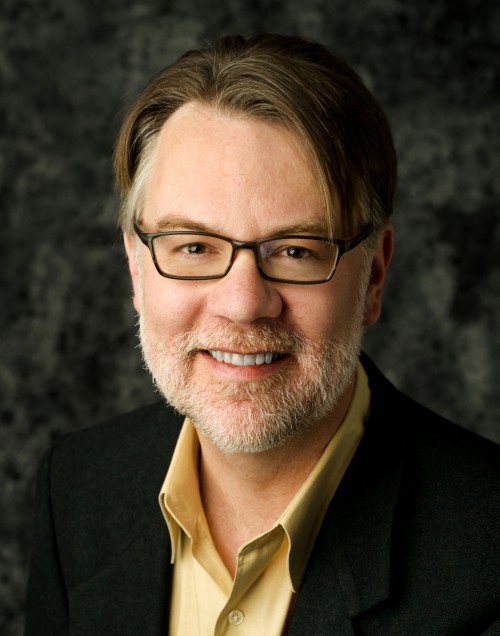
Prof. John Whiteis the Chair of the Department of Biomedical Engineering at Boston University. He was born and raised in northern Louisiana. Both of his parents are retired educators. White received his B.S. in Biomedical Engineering from Louisiana Tech University and his Ph.D. in Biomedical Engineering from Johns Hopkins University. After brief stints of postdoctoral work at the University of Texas Medical School, Houston, and the University of Iowa, White joined the faculty of Biomedical Engineering at Boston University, where he served for 13 years before joining the University of Utah in 2007. He moved back to BU to take the Chair's job in 2015.
White’s research focuses on the mechanistic bases of spatially and temporally coherent electrical activity in the brain, as well as the bases of neuronal information processing. His approach blends technology development, electrophysiology, computational modeling, and imaging. The goal is to develop new treatments for memory disorders and epilepsy, based on novel applications of electronic technology and methods of analysis from applied mathematics and engineering.
White has published over 80 peer-reviewed papers. As principal or co-principal investigator, he has raised over $50 million in grant funding from the National Institutes of Health, National Science Foundation, private foundations, and other sources. He is a Fellow of the American Institute for Biological and Medical Engineering and a Fellow of the Biomedical Engineering Society.
Ming Hsieh Department of Electrical Engineering - Systems
Viterbi School of Engineering
University of Southern California
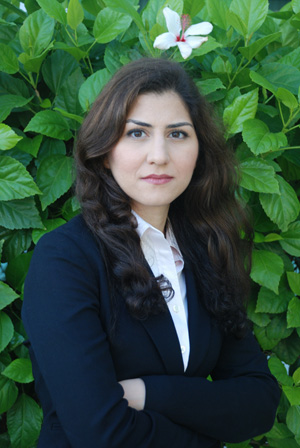
Prof. Maryam Shanechi is an assistant professor and the Viterbi Early Career Chair in Electrical Engineering at USC. Prior to joining USC, she was an assistant professor in Electrical and Computer Engineering at Cornell University. She received the B.A.Sc. degree with honors in Engineering Science from the University of Toronto in 2004 and the S.M. and Ph.D. degrees in Electrical Engineering and Computer Science from MIT in 2006 and 2011, respectively. She has held postdoctoral fellowships at Harvard Medical School from 2011-2012 and at the University of California, Berkeley from 2012-2013. She has received various awards including the NSF CAREER Award, the MIT Technology Review World's Top 35 Innovators Under 35 (TR35), the Popular Science Brilliant 10, the CalBRAIN Inaugural Award, the NAE FOE invitation, the Professional Engineers of Ontario gold medal, the W.S. Wilson medal, and the national Canadian doctoral fellowship (NSERC).
Dr. Shanechi's research focuses on applying the principles of information and control theories and statistical signal processing to develop effective solutions for basic and clinical neuroscience problems. One problem of particular interest to her is brain-machine interface (BMI) design for motor function, for closed-loop control of anesthesia, and for control of neuropsychological disorders. Her work combines methodology development with in vivo implementation and testing.
Departments of Biomedical Engineering, Neuroscience, Physiology and Biophysics
Director, Neural Engineering Center
Editor in Chirf, Journal of Neural Engineering
Case Western Reserve University
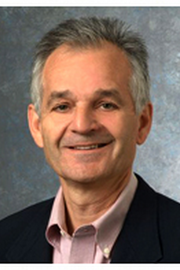
Prof. Dominique Durand is E.L. Linsedth Professor of Biomedical Engineering and Neurosciences and Director of the Neural Engineering Center at Case Western Reserve University in Cleveland, Ohio. He received an engineering degree from Ecole Nationale Superieure d'Electronique, Hydrolique, Informatique et Automatique de Toulouse, France in 1973. In 1974, he received a M.S. degree in Biomedical Engineering from Case Reserve University in Cleveland OH., worked several years at the Addiction Research Foundation of Toronto, Canada and in 1982 received a Ph.D. in Electrical Engineering from the University of Toronto in the Institute of Biomedical Engineering. He received an NSF Young Investigator Presidential Award as well as the Diekhoff and Wittke awards for graduate and undergraduate teaching and the Mortar board top-prof awards at Case Western Reserve University. He is an IEEE Fellow and also Fellow of the American Institute for Medical and Biomedical Engineering and Fellow of the Institute of Physics. He serves on five editorial boards of peer-reviewed scientific journals and he is the editor-in-chief and founding editor of the Journal of Neural Engineering. His research interests are in neural engineering and include computational neuroscience, neurophysiology and control of epilepsy, non-linear dynamics of neural systems, neural prostheses and applied magnetic and electrical field interactions with neural tissue. He has obtained funding for his research from the National Science Foundation, the National Institutes of Health and private foundations. He has published over 120 peer-reviewed articles and he has consulted for many biotechnology companies and foundations.
University of Texas at Dallas
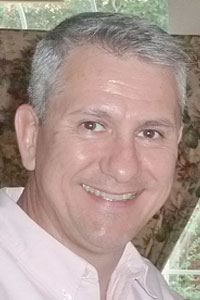
Prof. Mario Romero-Ortega is an Associate Professor of Bioengineering at The University of Texas at Dallas (UTD) and adjunct faculty in the Surgery department at the University of Texas Southwestern Medical Center (UTSW), the UTA Research Institute (UTARI) and Partner Researcher at the University of Wollongon, Australia. He received his doctorate in Neuroscience from Tulane University and postdoctoral training from UTSW as Associate Member of the Christopher Reeve Paralysis Foundation Research Consortium on Spinal Cord Injury.
He has served as Director of the Regenerative Neurobiology Research Division at Texas Scottish Rite Hospital and Assistant Professor of Neurology and Plastic Surgery at UTSW. He currently serves as Associate Editor of Frontiers in Neuroengineering and as Founder and Chief Scientific Officer for Nerve Solutions Inc, a company that commercializes the Biosynthetic Nerve Implant and the NeuroBlock devices developed in his laboratory. He is the recipient of the 2014 UTA College of Engineering Excellence in Research Award, the 2013 TechFortWorth Impact Award and "Ten Most Promising Life Science Company Award", and the 2013 Tech Titans Award in Technology Innovation.
His research interests are in understanding the molecular basis of axon guidance and target recognition during development and regeneration, and to generate novel nerve repair strategies.
Specific research areas include: Spinal cord injury, peripheral nerve gap repair, and regenerative peripheral neurointerfaces.
Harvard University
Director, Motion Analysis Laboratory
Spaulding Rehabilitation Hospital
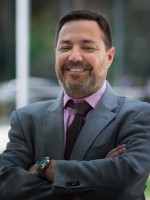
Prof. Paolo Bonato serves as Director of the Motion Analysis Laboratory at Spaulding Rehabilitation Hospital, Boston MA. He is an Associate Professor in the Department of Physical Medicine and Rehabilitation, Harvard Medical School, and an Adjunct Professor of Biomedical Engineering at the MGH Institute of Health Professions, Harvard Medical School. He has held Adjunct Faculty positions at the Massachusetts Institute of Technology, the University of Ireland Galway, and the University of Melbourne. At the Wyss Institute for Biologically Inspired Engineering, he brings his experience in rehabilitation technology with special emphasis on wearable technology and robotics. Dr. Bonato serves as Member of the Advisory Board of the IEEE Journal of Biomedical and Health Informatics and as Associate Editor of the IEEE Journal of Translational Engineering in Health and Medicine. He served as Founding Editor-in-Chief of the Journal of NeuroEngineering and Rehabilitation. Dr. Bonato served as an Elected Member of the IEEE Engineering in Medicine and Biology Society (EMBS) AdCom (2007-2010) and currently serves as IEEE EMBS Vice-President for Publications (2013-present). He served as President of the International Society of Electrophysiology and Kinesiology (2008-2010). He also served as Chair of the 33rd Annual International Conference of the IEEE Engineering in Medicine and Biology Society (2011) and as Chair of the IEEE EMBS Technical Committee on Wearable Biomedical Sensors and Systems in 2008, a committee of which he was a founding member in 2006 and on which he served until 2012. He received the M.S. degree in electrical engineering from Politecnico di Torino, Turin, Italy in 1989 and the Ph.D. degree in biomedical engineering from Universita di Roma “La Sapienza” in 1995.
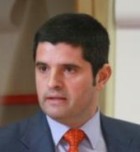
Prof. Jose Pons obtained his PhD in Physics, Universidad Complutense Madrid, in 1997. In 1998 he was appointed as Postdoctoral Fellow at the Institute for Industrial Automation of the Spanish Council for Scientific Research, CSIC. In 1999 he was awarded a position as Tenured Scientist, in 2007 a position as Research Scientist and eventually in 2008 a position as Full Professor, all at the same institution.
Prof. Pons has been with CSIC since 1993 and has actively participated in a number of National, European and International RTD projects in the area of rehabilitation robotics, new actuators and control technologies. In particular, he was co-ordinator of EU GAIT, EU MANUS and EU ESBiRRo projects. In addition he is currently co-ordinating of several national scope and European projects, e.g. EU NeuroTREMOR, Biomot, H2R and HYPER.
School of Pharmacy
University of California, San Francisco
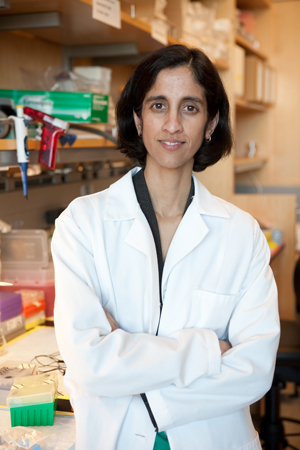
Prof. Tejal Desai's research brings together advanced micro and nanotechnologies, fundamental insight into cellular behavior in engineered environments, and novel pharmacologic delivery approaches to address disease treatment and clinical translation. Currently, her laboratory focuses on four highly interdisciplinary directions: 1. Hierarchical devices for enhanced cellular adhesion and paracellular drug transport; 2. Injectable and flexible nanoporous devices for rate-controlled long term release of therapeutics; 3. Nanostructured coatings and scaffolds for pro-healing implants and in vivo modulation of fibrosis, and 4. Cell-based delivery platforms for autoimmune disease applications. She envisions a future of precision medicine, enabled by advances in nanotechnology, engineering, and cell biology directed to clinical challenges in disease treatment. By taking advantage of our understanding of how cells respond to engineered materials and our ability to fabricate precise structural domains, her lab seeks to design new platforms to overcome existing challenges in therapeutic delivery.
Director, Danomedicine Center for Nucleoprotein Machines
CPRIT Scholar in Cancer Research
Rice University
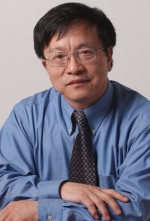
Prof. Gang Bao is a pioneer in nanomedicine, molecular imaging, and the emerging area of genome editing. The nanoscale structures and devices engineered in his lab have broad-based applications in basic biological research toward the understanding of underlying causes of disease, as well as in the translation of nano-scale tools for disease diagnostics and treatment, such as targeted drug/gene and cell-based therapies.
Bao joined Rice University’s Department of Bioengineering in March 2015. In addition to his outstanding track record in basic and translational research as a principal investigator at Johns Hopkins and at the Georgia Institute of Technology and Emory University, he brings two decades of significant experience in the development of leading research and education programs in biomedical engineering. Three multidisciplinary centers, directed by Bao at Georgia Tech, have focused on the detection and treatment of cardiovascular disease, the development of engineered nucleases for treating single-gene disorders such as sickle-cell disease, and pediatric nanomedicine approaches for improving children’s health.
Along with his lab, Bao brings his Nanomedicine Center for Nucleoprotein Machines to Rice. The National Institutes of Health-funded center is developing gene correction techniques to address an estimated 6,000 single-gene disorders. Their first target is sickle-cell disease, caused by a single mutation in the beta-globin gene. Bao’s ground breaking work in designing and optimizing engineered nucleases plays an essential role in this nanomedicine center. Using DNA-cutting enzymes, such as CRISPR/Cas9 systems, Transcription Activator-Like Effector Nucleases (TALENs) and Zinc Finger Nucleases (ZFNs), Bao is developing tools for precise gene editing. He has also been developing nanotechnologies for multimodality molecular imaging, sensitive detection of RNA and proteins, and for targeted drug delivery.
Investigations in the Bao lab are highly collaborative, interrelated, well-suited for medical and life-science applications. In 2003, he co-founded Vivonetics, Inc., a biotechnology company that aims to develop kits and custom products to enable the visualization of gene expression in living cells. In addition, 10 of his nanotechnologies have U.S. patents or provisional patents. They include nanostructured probes such as fluorescent molecular beacons, semiconductor quantum dots and magnetic nanoparticles for use as contrast agents to study diseases and to analyze the underlying biological processes.
Grants from the NIH Common Fund, from the National Heart, Lung and Blood Institute, and from the National Science Foundation are supporting Bao’s development of molecular imaging probes, and engineered nucleases and nanocarriers for drug/gene delivery. These technologies have been applied to a broad range of disease studies, including cardiovascular disease, cancer, and sickle-cell disease.
New research in the Bao lab is supported by a $6 million grant from the Cancer Prevention and Research Institute of Texas (CPRIT). The work will focus on a high level of integration and synergy between physician-scientists and clinicians as well as in the development of programmatic, education and cross training components for a highly specialized workforce in biology, clinical medicine, and the quantitative sciences.
Bao is the author of more than 150 refereed publications, two books and four book chapters. He is an elected fellow of the American Institute for Medical and Biological Engineering (2007), of the American Physical Society (2007), of the American Association for the Advancement of Science (2009), and of the American Society of Mechanical Engineers (2009). He has served as a member of the Society of Engineering Science’s Board of Directors (2006-2009).
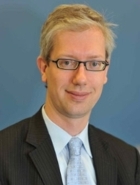
Prof. Henry Hess is a Professor in the Department of Biomedical Engineering at Columbia University. His research interests include nanobiotechnology, biomaterials science, and synthetic biology. A particular focus of his work is the engineering of hybrid nanodevices which integrate biological and synthetic components. Dr. Hess received a diploma in physics from the Technical University Berlin in 1996, and obtained his Dr rer. nat. (summa cum laude) in experimental physics from the Free University of Berlin in 1999 under the guidance of Ludger Woeste. His postdoctoral studies were conducted from 2000 to 2002 at the Department of Bioengineering, University of Washington, where he also served as a Research Assistant Professor (2002–2005). From 2005 to 2009 he served as an Assistant Professor at the Department of Materials Science and Engineering of the University of Florida. He received the Wolfgang Paul Award of the German Society for Mass Spectrometry (2000), the Feodor Lynen postdoctoral fellowship of the Alexander-von-Humboldt foundation (2000), the Philip Morris Forschungspreis (2005, together with his postdoctoral mentor Viola Vogel), the Distinguished Mentor Award of the UF/HHMI “Science for Life” program (2007), an invitation to the National Academies Keck Futures Initiative “Synthetic Biology” (2009), and was an invited speaker at the US Frontiers of Engineering Meeting 2010.
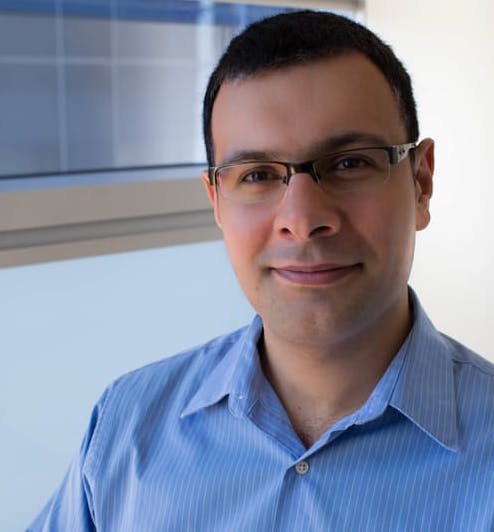
Dr. Kambez Benam received his B.Sc. with First-Class Honors in Pharmacology from Newcastle University in 2007, and his D.Phil. in Clinical Medicine (Immunology) from the University of Oxford in 2011. His doctoral work focused on host-pathogen interactions, pulmonary mucosal immunity, and development of mild and highly pathogenic viral infection models. His thesis revealed a novel antigen-presenting capacity in airway epithelium to directly interact with circulating blood lymphocytes. As a Senior Research Fellow in Don Ingber’s lab at Harvard, Kambez designed and developed a lung ‘small airway-on-a-chip’ to model debilitating human lung disorders such as chronic obstructive pulmonary disease (COPD) and respiratory viral infections in order to advance drug development strategies. He also engineered a microfluidically coupled multi-compartment system to ‘breathe’ whole smoke from tobacco-related products, electronic cigarettes or any other aerosolized compound/drug in and out of small airway chip microchannels as occurs in vivo (‘smoking-breathing airway-on-a-chip’). As a Wyss Institute Technology Development Fellow, Kambez is applying organ-on-chip technology to discover and validate novel therapeutic targets for lung diseases.
TEES Professor
Division Director, Biomedical Division, TEES Texas A&M University
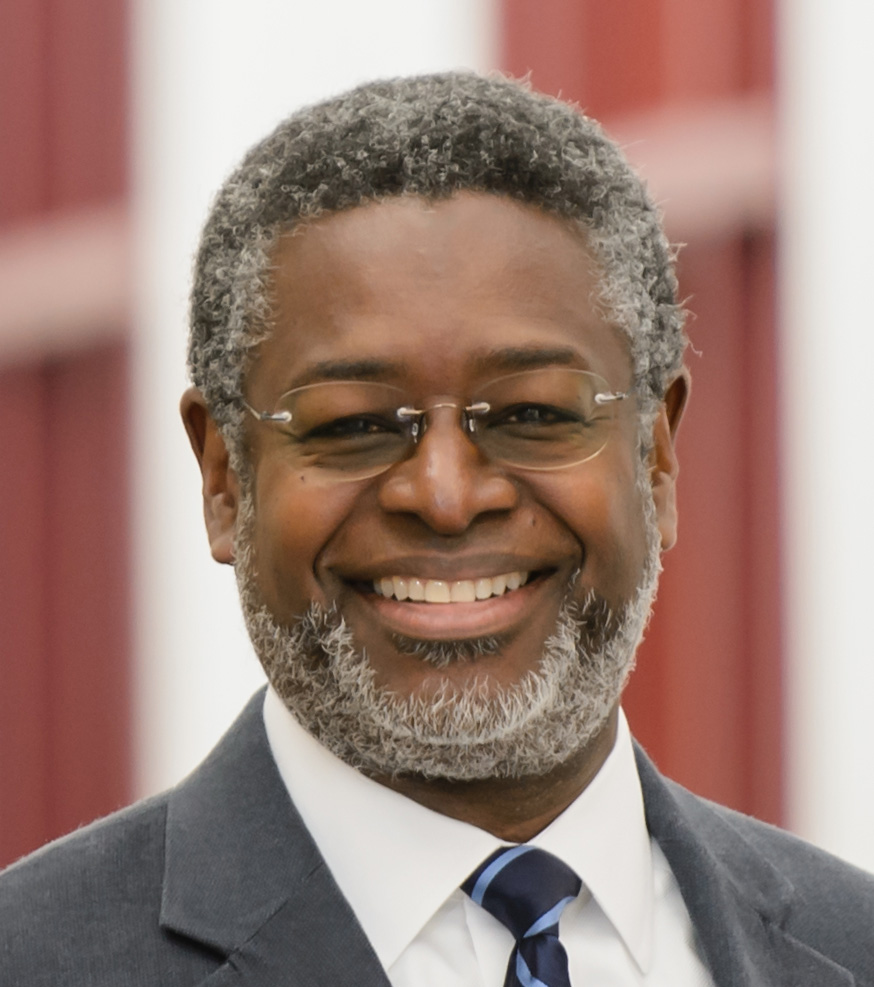
Prof. Anthony Guiseppi-Elie is head of the Department of Biomedical Engineering, director of the Biomedical Engineering Division of the Texas A&M Engineering Experiment Station (TEES) and TEES Professor at Texas A&M University. His primary research interests are in engineered bioanalytical microsystems in the service of human health and medicine and include:
Bioelectronics and Organic Electronics: The synthesis and characterization of chemically and biologically responsive materials such as CNT-Enzyme supramolecular conjugates, CNT-conductive electroactive polymer (CEP) composites and their integration with CMOS technology such as in Enzyme-FETS and chemoresistors used in multi-element arrays such as electronic tongue and electronic nose.
Biochips and Biofuel Cells: The development of implantable biochips for physiologic status monitoring. Research aims to integrate biotransducers, mixed signal electronics, low power devices and wireless communications into clinically relevant systems for monitoring during trauma and surgery and for monitoring in the intensive care unit (ICU).
Nano and Microfabrication and BioMEMS: Design and fabrication of interdigitated arrays, microdisc arrays and arrays of arrays for biological detection. Integration of arrays into biomedical diagnostic devices. The use of under potential electrodeposition to control the nanotopography, catalytic properties and interfacial impedance properties of metal/tissue interfaces.
Transdisciplinary research is along a continuum from fundamental investigations of length-scale influences of biomaterials properties through preclinical testing of diagnostic devices in piglets. Collaborations are with the Tripler Army Medical Research Center (Honolulu) and the Medical University of South Carolina.
Canary Center Early Cancer Detection Stanford University

Prof. Utkan Demirci is currently an associate professor at Stanford University School of Medicine, Canary Center Early Cancer Detection. Prior to his Stanford appointment, he was an Associate Professor of Medicine at Brigham and Women's Hospital, Harvard Medical School and at Harvard-MIT Division of Health Sciences and Technology serving at the Division of Biomedical Engineering, Division of Infectious Diseases and Renal Division. He leads a group of 20+ researchers focusing on micro- and nano-scale technologies. He received his B.S. degree in Electrical Engineering in 1999 as a James B. Angell Scholar (summa cum laude) from University of Michigan, Ann Arbor. He received his M.S. degree in 2001 in Electrical Engineering, M.S. degree in Management Science and Engineering in 2005 and Ph.D. in Electrical Engineering in 2005, all from Stanford University.
The Demirci Bio-Acoustic MEMS in Medicine Labs (BAMM) laboratory specializes in applying micro- and nanoscale technologies to problems in medicine at the interface between micro/nanoscale engineering and medicine. We apply innovative technologies to clinical problems. Our major research theme focuses on creating new microfluidic technology platforms targeting broad applications in medicine. In this interdisciplinary space at the convergence of engineering, biology and materials science, our goal is to create novel technologies for disposable point-of-care (POC) diagnostics and monitoring of infectious diseases, cancer and controlling cellular microenvironment in nanoliter droplets for biopreservation and microscale tissue engineering applications. These applications are unified around our expertise to test the limits of cell manipulation by establishing microfluidic platforms to provide solutions to real world problems at the clinic.
His lab creates technologies to manipulate cells in nanoliter volumes to enable solutions for real world problems in medicine including applications in infectious disease diagnostics and monitoring for global health, cancer early detection, cell encapsulation in nanoliter droplets for cryobiology, and bottom-up tissue engineering. His research interests involve applications of microfluidics and acoustics in medicine, especially: microfluidics for inexpensive, disposable CD4 counts and viral load for HIV in resource-constrained settings for global health problems; 3-D bioprinting and tissue models including 3-D cancer and neural cultures. Dr. Demirci has published over 80 peer reviewed publications in journals including PNAS, Nature Materials, Nature Communications, Advanced Materials, Small, Trends in Biotechnology, Chemical Society Reviews and Lab-chip, over 150 conference abstracts and proceedings, 10+ book chapters, and an edited book. His work was highlighted in Wired Magazine, Nature Photonics, Nature Medicine, MIT Technology Review, Reuters Health News, Science Daily, AIP News, BioTechniques, and Biophotonics. His scientific work has been recognized by numerous national and international awards including the NSF Faculty Early Career Development (CAREER) Award (2012), and the IEEE-EMBS Early Career Achievement Award (2012). He was selected as one of the world’s top 35 young innovators under the age of 35 (TR-35) by the MIT Technology Review. In 2004, he led a team that won the Stanford University Entrepreneur’s Challenge Competition and Global Start-up Competition in Singapore. His work has been translated to start-up companies including DxNow Inc. and KOEK Biotechnology.
Co-Founder, HiFiBiO SAS
Editor-in-Chief, IEEE Pulse
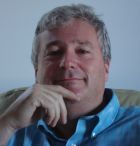
Dr. Colin Brenan is a serial life sciences entrepreneur and senior executive with 30 years experience in scientific research, project management, product development, strategic marketing and financing of early-stage life science companies. Dr. Brenan is currently a Founder and Chief Commercial Officer for HiFiBiO BV (www.hifibio.com). Formerly he was Managing Director of the Monsanto-Atlas Seed Fund Alliance at Atlas Venture (Cambridge, USA) where he identified and invested in seed and early-stage life science companies. Prior to Atlas, Dr. Brenan was Director of Strategic Relationships for the Center for Integration of Medicine and Innovative Technology (Boston, MA) where he implemented CIMITs innovation strategy with external partners, raised $6M in funding and launched a start-up (Organ Solutions) from the CIMIT Accelerator.
Previous to joining CIMIT, Dr. Brenan was the Founder, Chief Technology Officer and Senior Vice President, Business Development for BioTrove Inc. (Woburn, USA), a life science tools and consumables company spun-out from the Massachusetts Institute of Technology (MIT) and acquired by Life Technologies Inc. (LIFE:NASDAQ); and a Founder of Biocius Inc., a drug development instrument and service provider spun-out from BioTrove and acquired by Agilent Inc. (A:NYSE). At Biotrove, he was responsible for development of the OpenArrayTM and RapidFireTM products, expansion of the intellectual property portfolio from one patent application to 76 issued and pending patents, $8M in strategic sales and was the lead or co-lead in raising $30M of investment capital from corporate and venture capital partners. BioTrove is a MIT TLO Success Story, winner of the 2009 North American Frost & Sullivan Award for Growth Strategy Leadership of the Year and the acquisition of BioTrove by Life Technologies was voted one of the top ten M&A transactions of 2009 by PriceWaterhouseCooper.
Dr. Brenan is the inventor on 17 US and 18 foreign patents, and published +50 peer-reviewed journal articles, book chapters and reports in the fields of bio-microsystems, confocal microscopy, spectroscopic imaging and microsurgical robotics. He has over a decade of experience in consulting for the US National Institutes of Health and is a reviewer for IEEE, IEE, and AIP journals. Dr. Brenan is a Senior Member of the IEEE-EMBS, the Founder and former Chair of the EMBS Boston Chapter (2002-2007), the EMBS Region 1 Representative (2002-2005), the EMBC 2011 co-Chair and is Editor-in-Chief of IEEE PULSE Magazine (2013-present). He received his B.Sc. (Honors Physics), M. Eng. (Electrical), and Ph.D. (Biomedical Engineering) from McGill University (Montreal, Canada) and completed post-doctoral training at MIT (Cambridge, USA).
Dokuz Eylül University
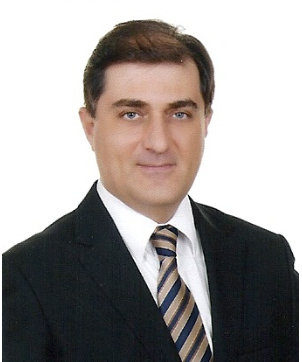
Prof. Murat Özgören is the vice rector of Dokuz Eylül University and a member of Department of Biophysics, Faculty of Medicine, Dokuz Eylül University. He is also chair of executive board of DEPARK technology development zone. He is the chair of the Sleep and Conscious States Technology Research and Application Center and also a member of the Brain Dynamics Research Center. He is the associate editor in the Journal of Sleep and Biological Rhythms. Additionally he is a delegate of European Strategic Forum on Research Infrastructures (ESFRI), as well as having served as chair of Health and Food Strategy Working Group. He is a member of the Editorial Board of World Journal of Anesthesiology. He reviews manuscripts for a number of journals ranging from Brain Research to Neuropyshcologia. He is the founding member of the proposed initative of "International Sleep Science and Technology Association (ISSTA). Dr. Özgören's research interests include applied brain biophysics, signal processing, information processing in the brain, multidisciplinary and translational studies in the cognitive science incorporating memory, sleep and pathological processes.